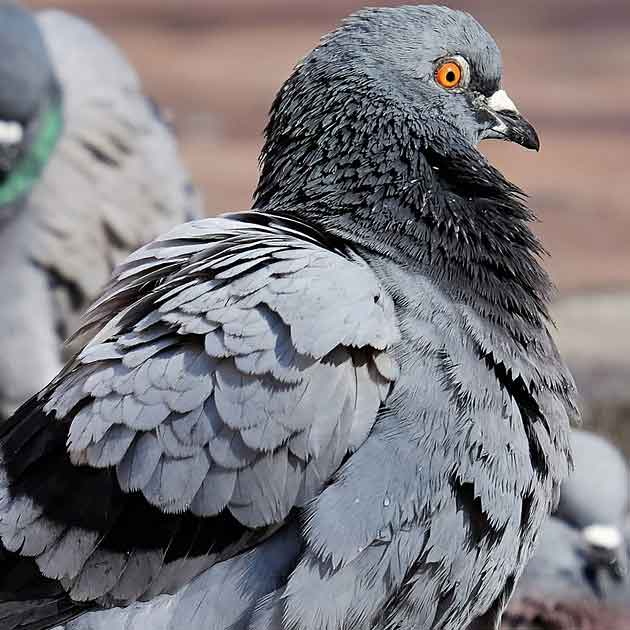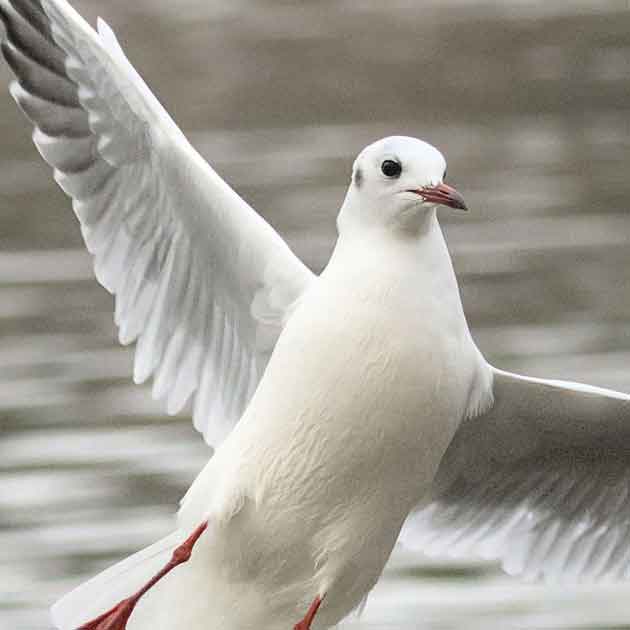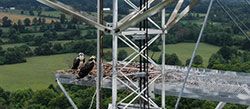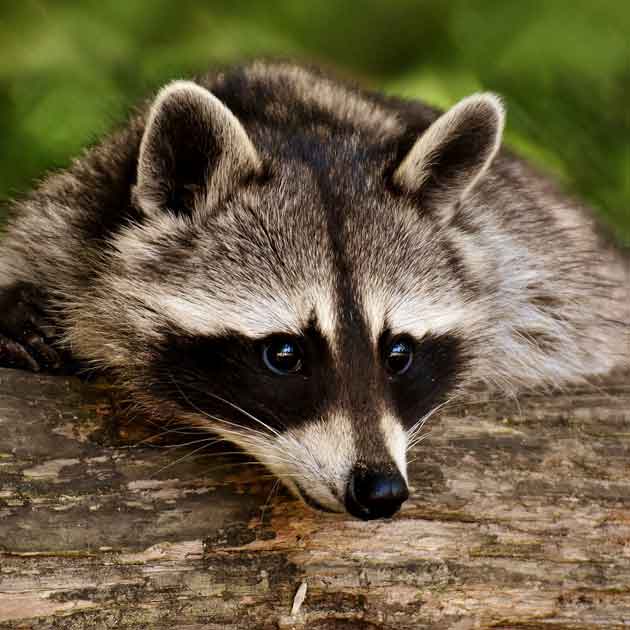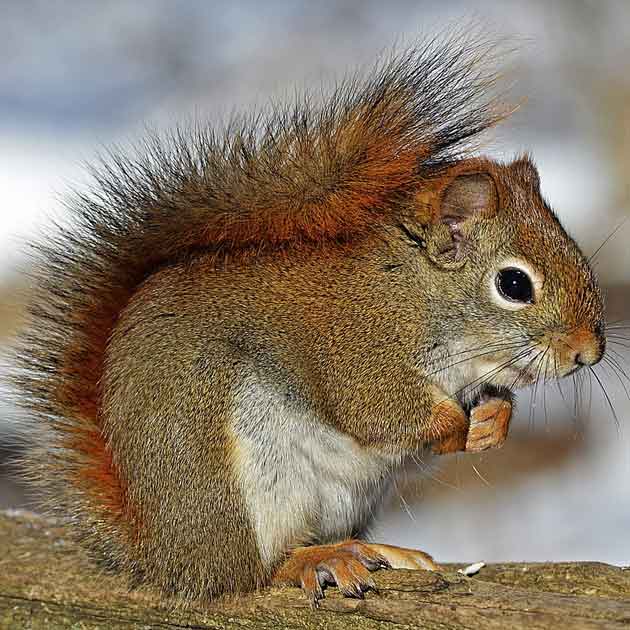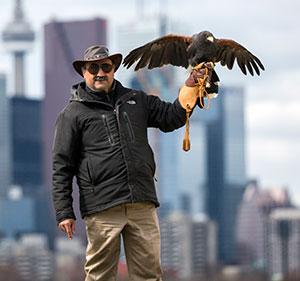With its freezing temperatures and harsh winds, Ontario winter forces raccoons to abandon flexible den habits for a single warm, secure location, creating a high-risk, long-term raccoon infestation in winter, which lasts until spring and beyond. Identifying and addressing these primary dens in the cold months is crucial to preventing structural damage and costly spring repairs.
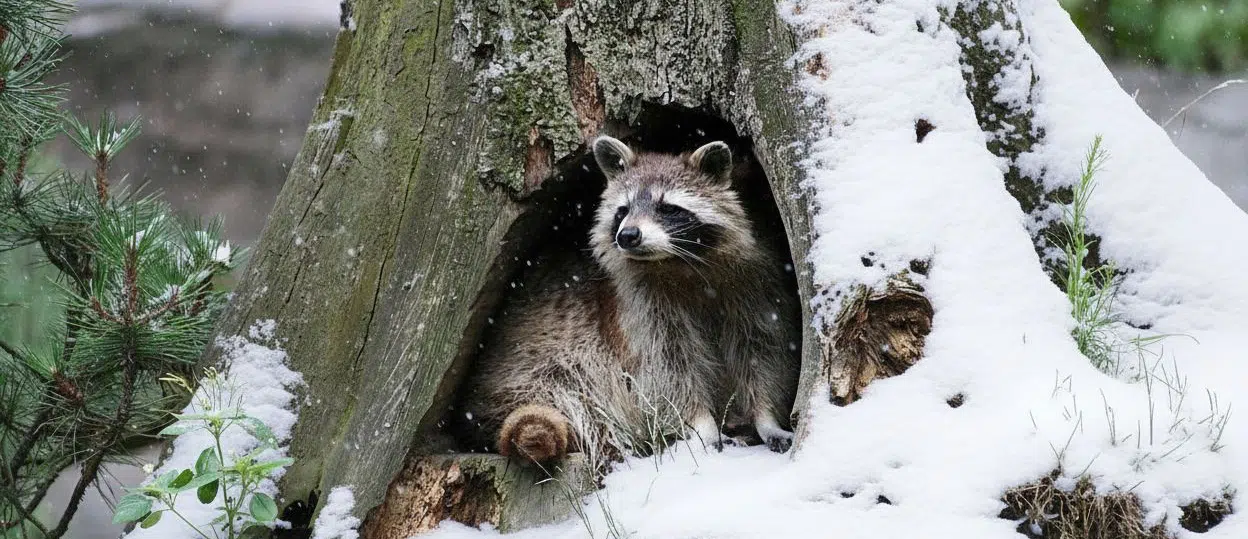
Raccoon Winter Behaviour in the GTA
After a flurry of activity during the fall months where their focus was on calorie intake, raccoons settle into long winter naps once the snow arrives. Focus is now on staying warm and safe from predators. This behaviour is one of the reasons homeowners and commercial/industrial property managers should search for winter raccoon control early in the season, before a raccoon infestation is too entrenched.
- Torpor, Not Hibernation
Raccoons do not truly hibernate but rather enter a state of torpor—a deep sleep broken by periods of waking. While in this state, their body temperature lowers, and breathing and metabolism slow to conserve energy. They will keep a single, secure den for weeks at a time to conserve energy and survive freezing temperatures. - The Thermal Imperative
During the winter months, raccoons seek out areas with trapped heat (i.e., from the house, equipment, or ground) and maximum wind protection. This commitment to one warm spot makes winter dens extremely destructive. - Reduced Activity, Increased Risk
While they forage less often, raccoonss' activity when inside the den is focused on insulating and securing the perimeter by procuring and using any suitable materials. This often results in severe damage to building insulation, etc.
Where Raccoons Den in GTA Winters
Where do raccoons usually nest during colder months? Residential, commercial, and industrial properties offer a plethora of options.
- Structural Areas (Warmest Spots):
- Attics:
Attics are probably the most sought-after spot for raccoons (and other wildlife - think squirrels!) to wait out old man winter. Proximity to chimneys or plumbing stacks and just the rising heat from floors beneath make attics perfect for winter denning. Raccoons access attics through the roof and poorly sealed roof vents. - Chimneys:
If uncapped, your chimney can provide a dark, contained vertical shelter. - Garage Ceiling Voids:
The insulated space above an attached garage creates a thermal bridge to the main house/building. It is also safe and enclosed with little to no human traffic.
- Attics:
- Ground-Level Havens (Insulated Spots): Areas that hold ground heat and are protected from the wind and snow.
- Crawl spaces:
Crawl spaces underneath a structure provide consistent, moderate warmth. - Window Wells Basement Voids:
Small, contained pockets near the foundation may also be converted to a winter den. - Sheds/Deck Voids:
Areas under sheds or decks, especially if the ground is skirted, trap heat and provide sufficient shelter.
- Crawl spaces:
- Commercial Industrial Spots (High-Value Warmth):
- Warehouses and Factories:
Heat from machinery or HVAC vents attracts raccoons. Low-traffic areas like maintenance rooms should be inspected regularly. - Abandoned or Low-Traffic Buildings:
Quiet, undisturbed areas still draw furry winter dwellers, even if not actively heated. Raccoons can evade detection for months in abandoned or vacant properties. - Seasonal Businesses and Schools:
Buildings that are closed for periods of time, such as schools often see raccoon invasions. By the time the animals are detected, it's often too late and significant damage has been done. - Loading Docks:
Open loading dock doors invite raccoons inside to explore hidden spaces for temporary dens.
- Warehouses and Factories:
- Natural/Outdoor Denning Spots near Homes:
- Hollow trees, brush piles, abandoned burrows, woodpiles, and old cars/trucks and machinery also make for suitable raccoon winter dens.
- Hollow trees, brush piles, abandoned burrows, woodpiles, and old cars/trucks and machinery also make for suitable raccoon winter dens.
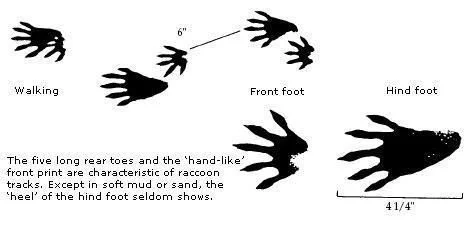 Identifying an Active Winter Den of Raccoons
Identifying an Active Winter Den of Raccoons
- Footprints in the Snow:
Raccoons leave distinct, hand-like tracks. Look for paw prints leading to a structure after a fresh snowfall. A well-used den will have tracks indicating a consistent entry and exit path. - Thermal Signatures:
A lack of insulation or a significant entry breach will show as a melted patch of snow on the roof or a warmer area on an exterior wall. This may only be visible with a thermal inspection. - Acoustic Signs:
Unlike during the highly active summer months, winter den noises are often concentrated in one spot and include low shuffling sounds or even snoring. - Smell/Odour:
A strong and unpleasant musky smell may indicate the presence of raccoon urine and feces; when combined with visible entry-point damage, this can help property owners learn how to find a raccoon den before costly repairs are needed. - Visible Damage:
Inspect and look specifically for torn vent screens, bent metal flashing, or ripped plastic sheeting near the suspected entry point. In the attic, check for displaced insulation materials. - Seasonal Indicators:
Activity spikes during early winter and mid-February when females prepare birthing dens.
How to Safely Confirm and Locate the Raccoon Den in Winter
- Sighting of a raccoon
- Thermal imaging cameras or endoscopes can confirm raccoon presence in attic and wall cavities.
- Visual signs include fresh droppings and footprints.
- Avoid direct contact and never approach raccoon in a confined space. Cornered raccoons become aggressive.
- Call in a professional. You likely lack the equipment and experience needed to safely locate the raccoon den or determine how to remove a raccoon den without risking injury or breaking wildlife laws.
Safe Humane Removal of Raccoon Dens in Winter
Importance of Professional Assessment:
Removal begins with a thorough assessment, especially concerning seasonal timing. Professionals must consider if it is the birthing/nursing period (usually late winter/early spring) and if raccoon kits are present before any action is taken.
Methods for Raccoon Eviction and Capture (Multi-Stage Approach):
- One-Way Exclusion:
Specialized one-way exclusion doors are installed after technicians have confirmed, usually via inspection camera, that the den is clear of immobile young. - Targeted Trapping:
For stubborn animals, or when young are present, live trapping with bait is necessary. It is of utmost importance that all raccoons are captured and no baby is left behind. Also see:https://www.hawkeye.ca/blog/professional-raccoon-trapping. - Post-Capture Decision:
Following capture, the raccoon can be either relocated within the legal 1-km limit or humanely euthanized.
Permanent Removal Guarantee:
Hawkeye Bird Animal Control utilizes its unique licenses for humane euthanasia when legally requested by the property owner, ensuring the animal will not return - a crucial advantage for those needing permanent raccoon removal in the GTA.
Handling Stubborn or Multiple Dens:
When dealing with multiple dens or highly aggressive/trap-shy raccoons, the protocol often involves sequential trapping, followed by permanent exclusion to address all vulnerabilities at once.
Removal Challenges in the Cold:
- Icy Access
Roof and ladder work is inherently more dangerous due to ice and snow. - Biohazard Concentration:
Raccoon waste is highly concentrated inside the den cavity, demanding strict Hazmat cleanup.
Post-Removal Property Restoration Prevention
- Thorough cleaning, deodorizing, and sanitizing of den areas to eliminate odours that attract other wildlife;
- Assessment and repair of damaged flooring, insulation, and drywall;
- Repair and reinforcement of entry points with durable materials such as steel mesh and flashing;
- Installation of chimney caps, vent guards, and seals on roofline gaps;
- Recommendations for ongoing monitoring and maintenance to ensure no re-entry;
- Plan for landscape modification to disallow access to roof and reduce shelter opportunities around buildings during the winter.
 FAQs: Winter Raccoon Den Removal
FAQs: Winter Raccoon Den Removal
Q: What does a raccoon den look like?
A: Raccoons are quite opportunistic and seem to have adopted a 'work smarter, not harder' attitude. Not a whole lot of time is spent on 'building' a den. Instead, existing spaces are renovated or repurposed. As long as the space is protected from the elements, provides safety from predators, and is quiet enough for a long snooze, anything goes. Rock crevices or tree hollows and abandoned dens left by a fox or groundhog are pretty much turn-key operations. So are your shed, chimney, or attic. Depending on the original architect or available space, a raccoon den can consist of several chambers including a latrine. Raccoons are actually very clean animals and keep their bathroom activities confined to one area. This becomes especially problematic in attics. The raccoon will line its new home with both natural and man-made materials - whatever is available and is suitable to insulate or increase comfort.
Q: Once I suspect a winter attic den, what should be my next step?
A: Depending on the location of the den, you may want to skip right to the actual solution: Call a professional. If you suspect or have confirmed a raccoon in your attic, you absolutely need to get it out as soon as humanly possible. A licensed and experienced wildlife removal service will trap the raccoon(s) and remove them. You get to decide whether to release the animal within a kilometre from your property or humanely euthanize it. If the den is in your backyard and the raccoon isn't causing any havoc, you may be OK with postponing any harassment until spring.
Q: Is it safe to light my fireplace if I hear scratching in the chimney?
A: No, please don't light your fireplace if you suspect that a raccoon (or bird!) is in your chimney. You'll want to remove the animal before doing so. Try to scare the raccoon out with noise or a leaf blower from below. If that's unsuccessful (and it may well be), it will likely take a wildlife technician with a capture pole to get on the roof and remove the raccoon from above.
Q: How long do raccoons typically use the same den?
A: Raccoons frequently change dens or have several on the go during the summer and autumn months. For the first two months after kits are born in early spring and during the winter, they tend to hunker down in one place.
Q: Can raccoon dens cause odour or moisture problems inside the property during winter?
A: Yes, odour and moisture issues are a big concern with raccoon dens in confined spaces. Health hazards include the growth of mould, deteriorating air quality, and airborne transmission of pathogens.
Q: What should I do if I suspect raccoons are hibernating inside my walls?
A: Because raccoons don't actually hibernate, they will leave their den inside your walls every few days. If possible, find their entry point into your home and install a one-way-door. If that is not an option due to space or placement issues, it's best to call a professional. They will confirm the location of the animal(s) with thermal imaging equipment and propose a custom exit strategy for your uninvited guests.
Q: Can a raccoon freeze to death if trapped outside its den?
A: In very harsh winters and without sufficient cover or shelter - yes. Likewise, a malnourished, sick , or injured raccoon can succumb to the cold. Hence, the increase in raccoon infestations in winter.
Q: What should I do if I find multiple raccoon dens on my property?
A: It is unlikely that you'll find more than one raccoon den inside your home. Raccoons are mostly solitary animals, except for mothers with offspring. They will often stay together for the first winter; the young'uns will separate to find their own home range or territory the following spring. If you find multiple outdoor dens, it may be one raccoon rotating between dens, although that is less common in the winter months. Either way, if you really want them gone from your property, a professional wildlife control service will trap and remove the raccoon(s).
Q: Are baby raccoons ever born during the winter months?
A: No, the reproduction cycle of raccoons begins in January, and by April or May at the latest, female raccoons give birth to their young. In each litter, there can be one to six baby raccoons. In the first year of the kits' life they're very sheltered by their mother until they grow large and strong enough to defend themselves.
Q: Will the raccoon move out on its own if it gets warm for a day?
A: No, the raccoon isn't likely to move out and on but it will leave its den multiple times to feed in between periods of deep sleep. Especially in the midst of winter, the raccoon will likely return to its warm and secure den.
Q: Can I use loud noises to scare a raccoon out of its winter den?
A: Noise as a raccoon deterrent does not promise much success. Raccoons are smart and quite determined when they've found a good spot to rest. They will quickly determine that the noise may be annoying and interfere with sleep but poses no danger.
Q: Will the raccoon die if I seal the entry hole during winter?
A: Obviously, we would not want to seal the hole while the raccoon is trapped inside - that would kill the animal for sure and lead to a host of different problems. But locking the raccoon out is a solid tactic and will force the animal to find a new winter residence.
Q: Can raccoons attack pets if disturbed near their den?
A: A raccoon attack is much more likely when newborn kits are around. Most raccoons would rather retreat than pick a fight with your cat or dog. In fact, many a friendship has been struck between cats and raccoons. Raccoons adore cat food (canned food, in particular), so that's something you'll want to keep out of their reach. However, a raccoon infected and symptomatic with rabies may show distinct aggressive behaviour towards your pets. If you have any suspicion that rabies may be an issue, call your municipal animal control. Under no circumstances should you try to interact with the raccoon yourself.
Q: Can raccoon dens attract other wildlife or pests during the cold season?
A: Indeed, a raccoon den can bring on larger wildlife (such as coyote) any time of year. This may be even more of a concern during the winter months when all wildlife has to contend with food scarcity.
Q: Will removing a raccoon den in winter prevent the animal(s) from returning in spring?
A: Generally speaking, raccoons have a very good memory and strong homing instinct. There is a good chance that a raccoon will return to a place that has served it well and is close to food, water, and shelter. If you evicted a raccoon from inside your home, pay close attention to any potential access points to your home and inspect regularly. If you've sent it off and out of your backyard, expect to see it return.
Q: Are there humane ways to deal with raccoons already settled in for winter?
A: That is a good and potentially difficult to answer question. Trapping and relocating a raccoon in the middle of winter could spell real hardship for the animal. When released, it would need to find a suitable new den immediately or perish in the cold. Securing food in an unfamiliar location is also much more difficult in the winter. The most humane thing for the raccoon may just be euthanasia.
Q: Is professional removal still possible during heavy snow or freezing conditions?
A: Yes, professional fur bearing trappers can remove raccoons year-round.
Q: Is the cost of winter raccoon removal higher than in summer? How much does professional winter raccoon den removal cost in the GTA?
A: The process and cost of raccoon removal is the same year-round. In the GTA, residential wildlife technician visits start at $175. The cost goes up if and when more traps are needed.
Q: Does insurance cover raccoon den removal or damage repairs in winter?
A: The majority of homeowner's insurance policies do not cover raccoon damage. Some policies do cover some wildlife damage but classify raccoons as rodents rather than wildlife. It's definitely worth checking your policy for wildlife provisions and confirming with your insurance company.
Don’t wait for damage or disease - act now to get rid of raccoons safely and permanently.
Contact Hawkeye today for legal and guaranteed raccoon den removal this winter.
If you suspect that you have unwanted winter guests, seek professional wildlife control services and put an end to winter raccoon infestation in your home or on your property. Early intervention can prevent extensive damage and escalating costs.
Hawkeye Bird & Animal Control has over 35 years of experience safely removing raccoons and winter dens and is the ONLY company in the GTA with a guarantee of permanent raccoon removal.
Hawkeye's raccoon removal services are available all across Southern Ontario, including Toronto , Scarborough , Brampton, Vaughan , Markham , Ajax , Pickering , Newmarket , Etobicoke , Oshawa , and Mississauga .
Related Articles:
https://www.hawkeye.ca/blog/get-rid-of-raccoons-in-underground-parking-garages
https://www.hawkeye.ca/blog/raccoons-in-scarboroughs-detached-garages
https://www.hawkeye.ca/raccoon-on-roof


